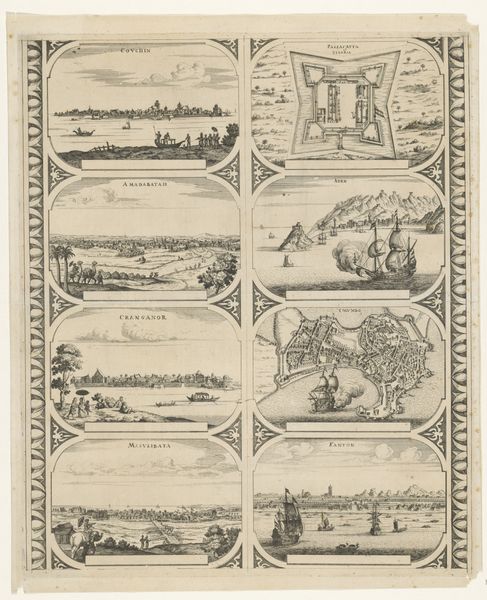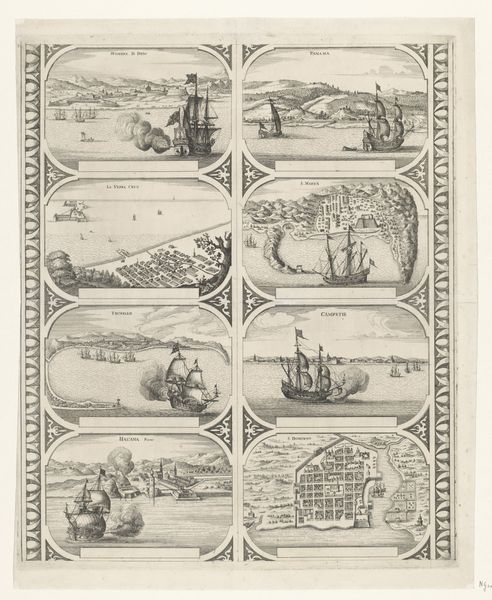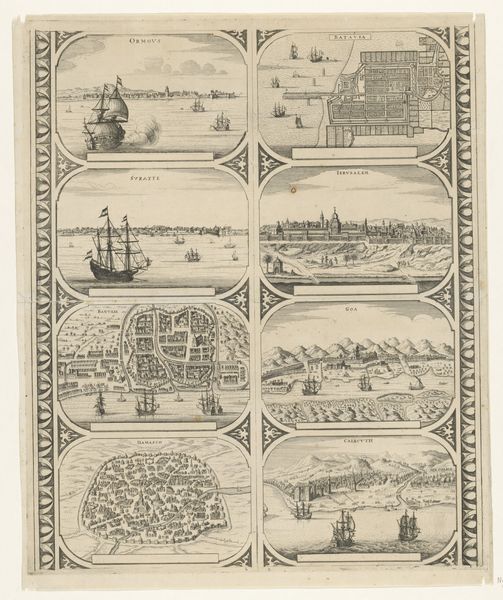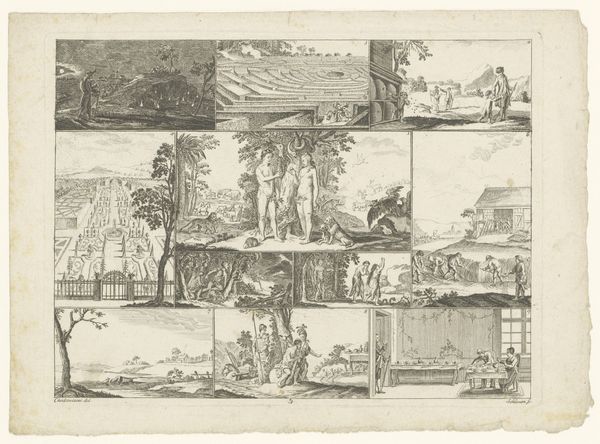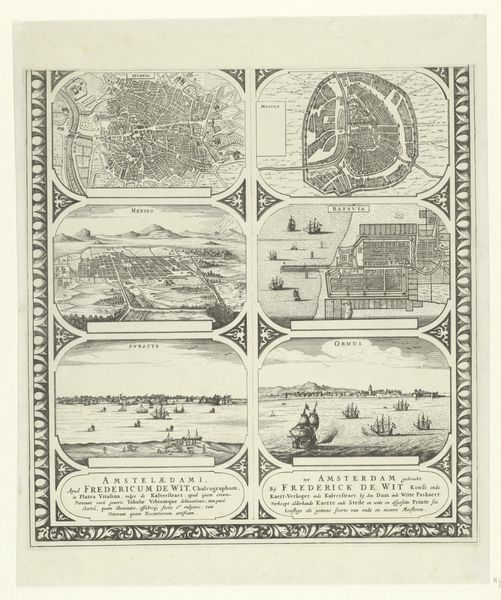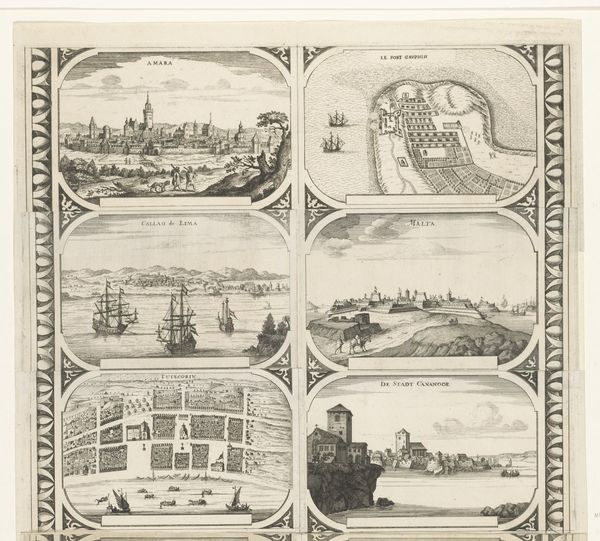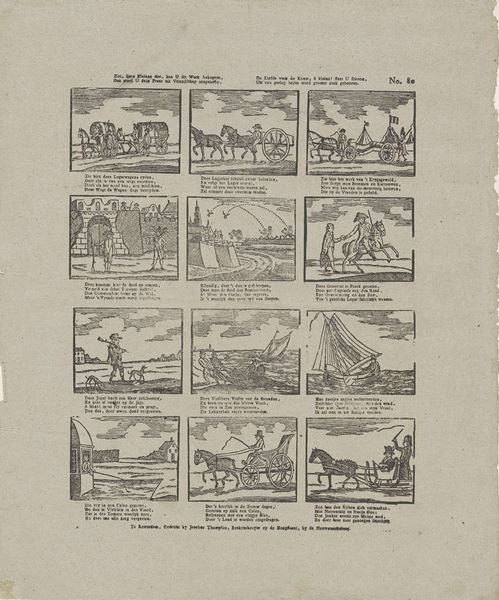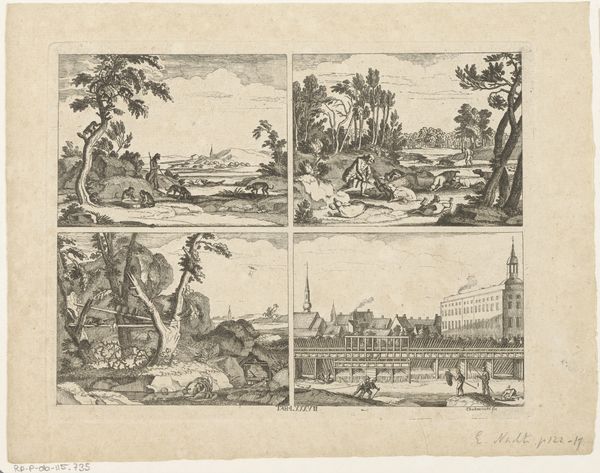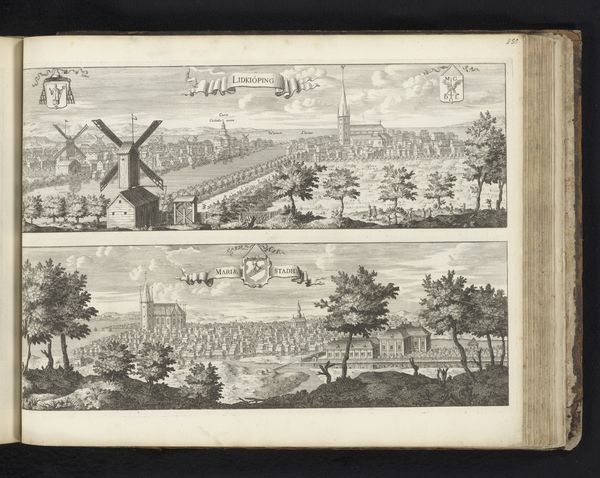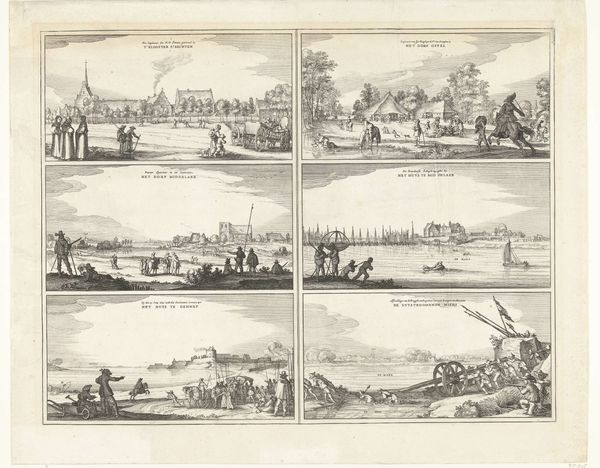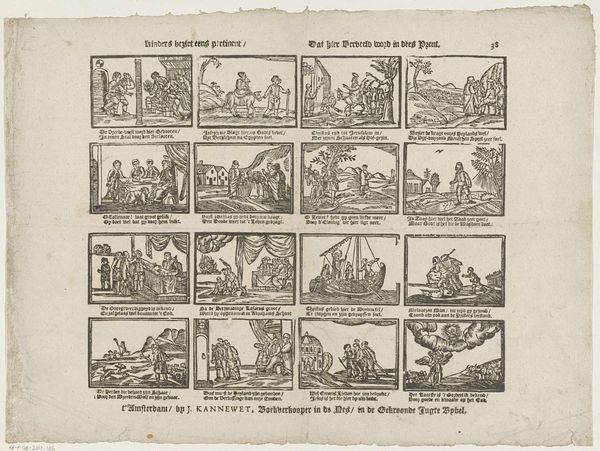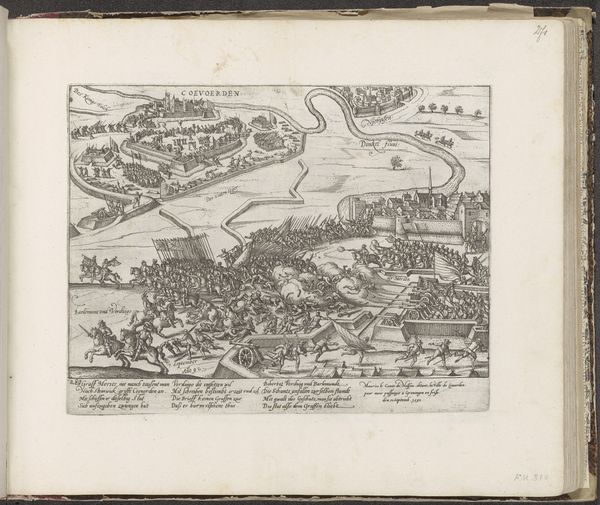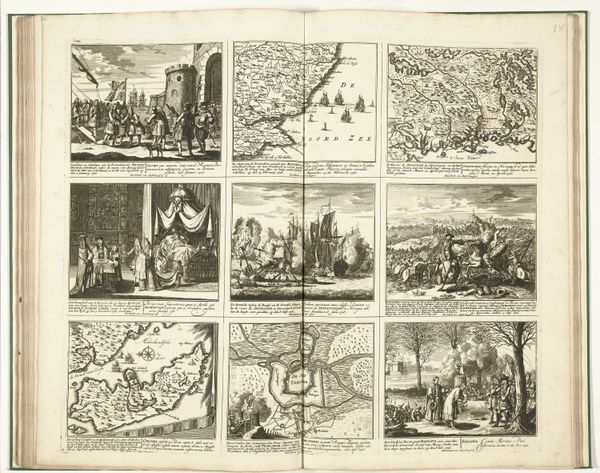
Jaffnapatnam / Cartagena / Angra / Porto Rico / De Stadt Gale / Portus Acapvlco 1670 - 1672
0:00
0:00
anonymous
Rijksmuseum
print, engraving
#
baroque
# print
#
cityscape
#
history-painting
#
engraving
Dimensions: height 387 mm, width 438 mm
Copyright: Rijks Museum: Open Domain
Editor: This print, dating back to 1670-1672, presents six different cityscapes: Jaffnapatnam, Cartagena, Angra, Porto Rico, De Stadt Gale, and Portus Acapvlco. I find the composition fascinating, like a visual encyclopedia of colonial port cities. How do you read this image as a whole? Curator: The grouping of these six cities together immediately signifies the reach of global power structures at the time, each image a coded assertion of influence and mercantile might. Look at the consistency in rendering, the way fortifications dominate each view. Doesn't it suggest a preoccupation with control and defense? Editor: Definitely. There's a strong sense of each city being presented as a strategic point, carefully mapped and defended. Why do you think the artist chose to depict these particular locations? Curator: These were key nodes in global trade networks during the Baroque era. Each cityscape carries the symbolic weight of its role in that system. Note how the ships are prominently featured in nearly every scene, connecting them. It suggests both movement of goods but perhaps the movement of power and the cultural implications therein. What is this silent narrative telling us about colonial power? Editor: That's a powerful way to frame it. I was focused on the individual cityscapes, but seeing them as interconnected pieces of a larger power dynamic is eye-opening. Curator: And think about the choices inherent in translating reality into image. What stories were included, what were omitted? Those decisions also reveal cultural values. Consider how the architectural features of each city subtly communicate cultural values – or attempts to overwrite existing ones. Editor: I hadn’t considered how much information can be packed into seemingly simple architectural renderings. Thanks, I learned a lot about reading visual symbols today! Curator: As did I! Thank you for that observation – a print speaks more about who creates than what’s created, perhaps.
Comments
No comments
Be the first to comment and join the conversation on the ultimate creative platform.
